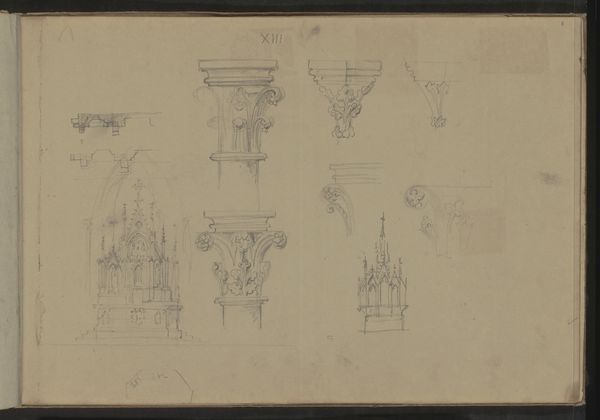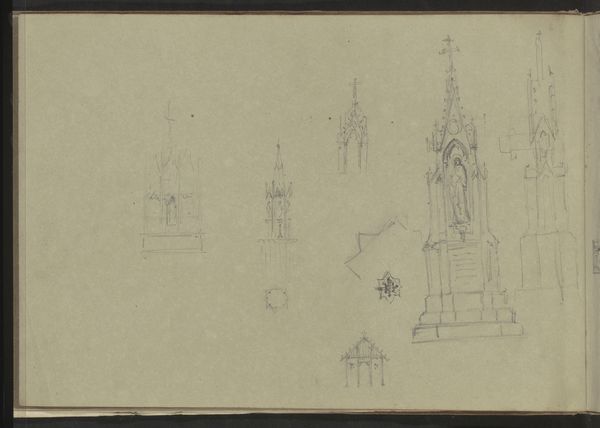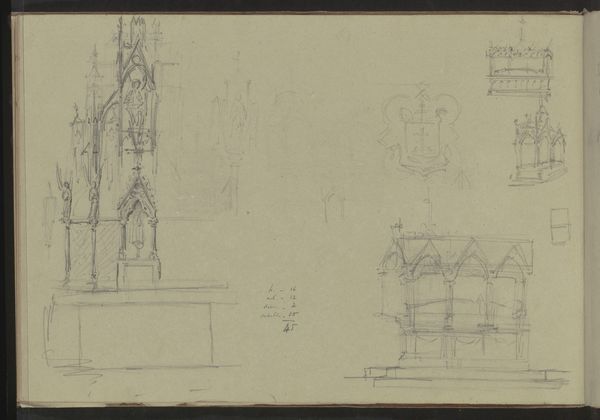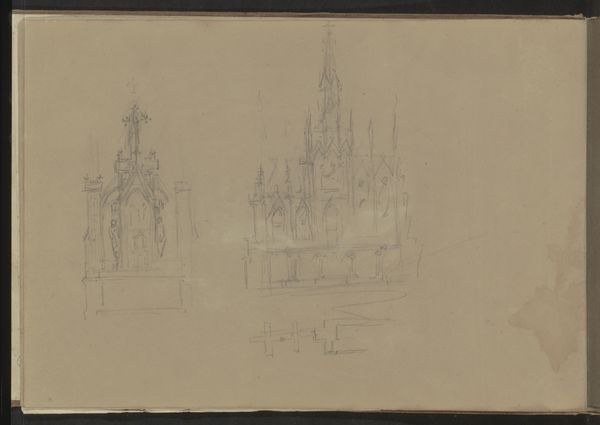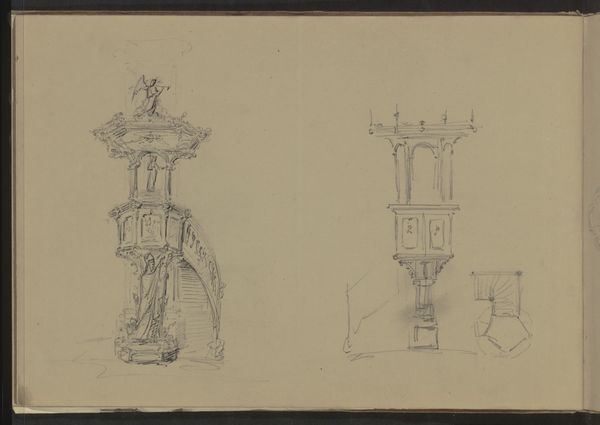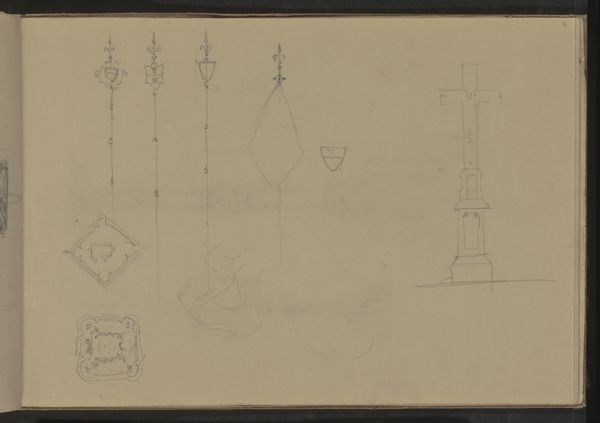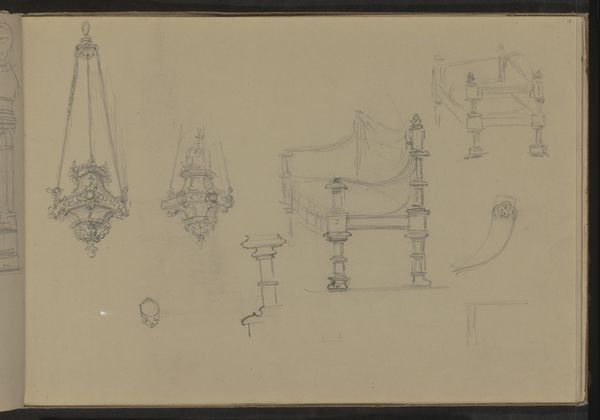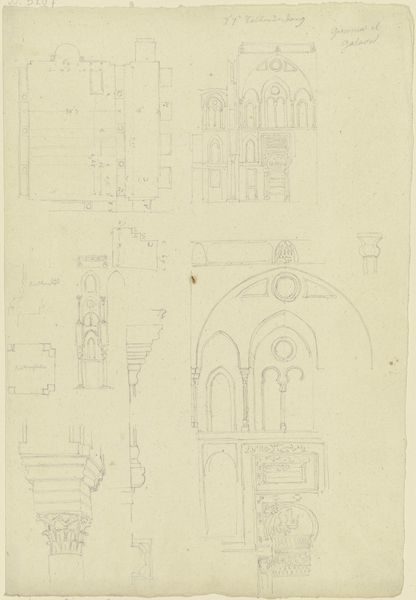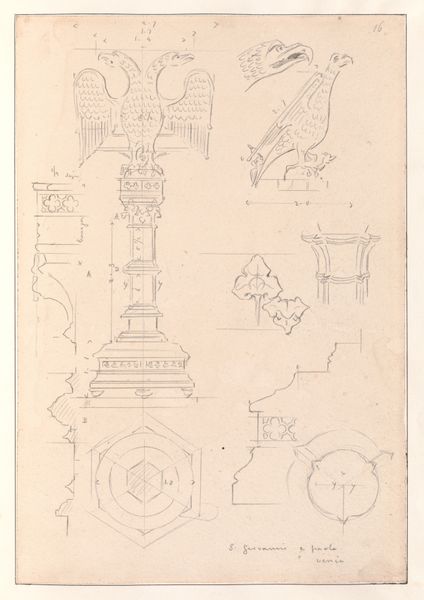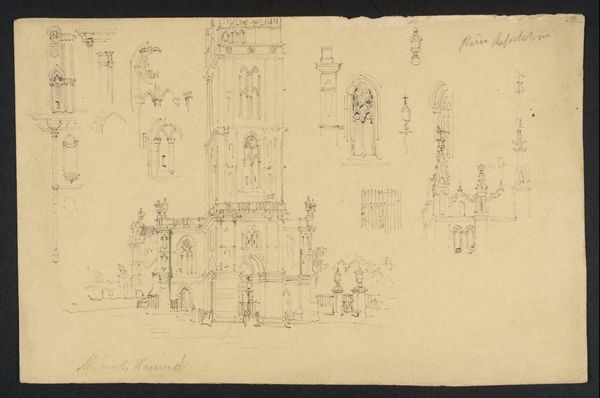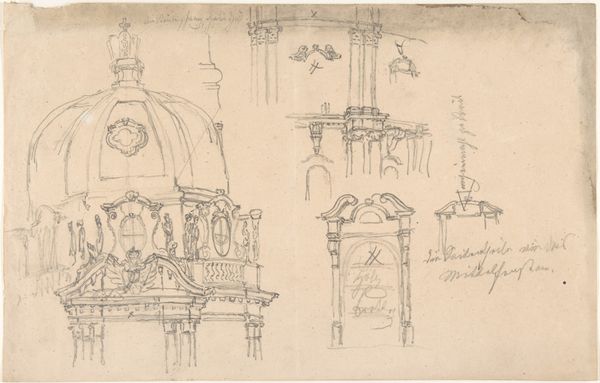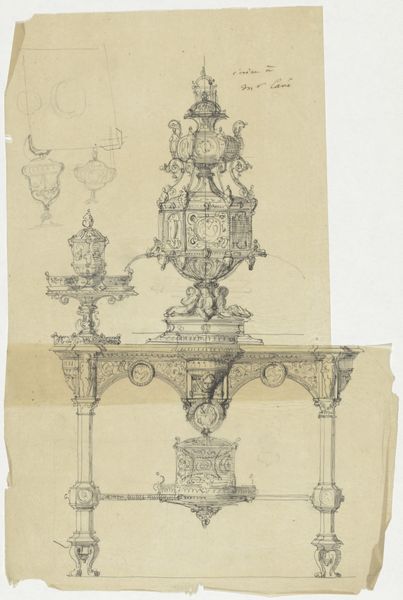
Studieblad, onder andere met het exterieur van een kerk en monstransen 1837 - 1921
0:00
0:00
drawing, paper, pencil, architecture
#
drawing
#
aged paper
#
toned paper
#
medieval
#
quirky sketch
#
sketch book
#
paper
#
personal sketchbook
#
idea generation sketch
#
sketchwork
#
geometric
#
sketch
#
pencil
#
sketchbook drawing
#
storyboard and sketchbook work
#
sketchbook art
#
architecture
Copyright: Rijks Museum: Open Domain
Curator: Here we have a page from a sketchbook, "Studieblad, onder andere met het exterieur van een kerk en monstransen," by Pierre Joseph Hubert Cuypers, dating from 1837 to 1921. The medium is pencil on paper. What strikes you first about this drawing? Editor: An immediate sense of transience, these quick sketches convey ideas captured rapidly before they fade. The light pencil on aged paper feels ephemeral. Curator: Precisely. Consider Cuypers’ process here. The material evidence of design: tentative lines mapping out church exteriors alongside meticulous studies of monstrances, key objects within Catholic ritual, showcasing metalwork, adornment and skilled craftsmanship. Editor: Yes, and the juxtaposition of architectural forms with these religious objects is quite potent. The monstrances, especially, are laden with symbolism. Each cross, each decorative flourish, carries the weight of centuries of Christian iconography and the memory and the meditation of death through those little skull details on two of them. Curator: Good eye. It points toward the function of these objects and buildings. Were they not mere aesthetics of labor and construction? They exist to serve ritual and the expression of collective faith, shaping societal behaviours. The sketchbook becomes a workshop of religious culture. Editor: Indeed. These weren’t just metal objects, they were focal points for community worship, for articulating identity, maybe, a relationship to transcendence through their shared experience in and out of gothic interiors. Cuypers is mapping the visual vocabulary of faith. Curator: A visual vocabulary rooted in precise labor, from the mining of materials to the goldsmith's art. Think of the guilds, the apprenticeship model, the knowledge embedded in these production practices and its importance in shaping material reality of Dutch society in the late 19th century. Editor: The object serves as a mirror reflecting their values back at them. Studying this piece brings awareness to both its function, meaning and materiality to our attention. Curator: Looking at this seemingly humble sketchbook page has given me a better understanding of not only how Cuypers developed his ideas, but of the skilled and faithful world that helped shaped it, one process at a time. Editor: It shows us a rich visual legacy that still informs and resonates. The cross-cultural exchange of iconographies and artistic craftsmanship across Dutch culture, which opens new doors for modern audiences to better understand historical memory in art.
Comments
No comments
Be the first to comment and join the conversation on the ultimate creative platform.
